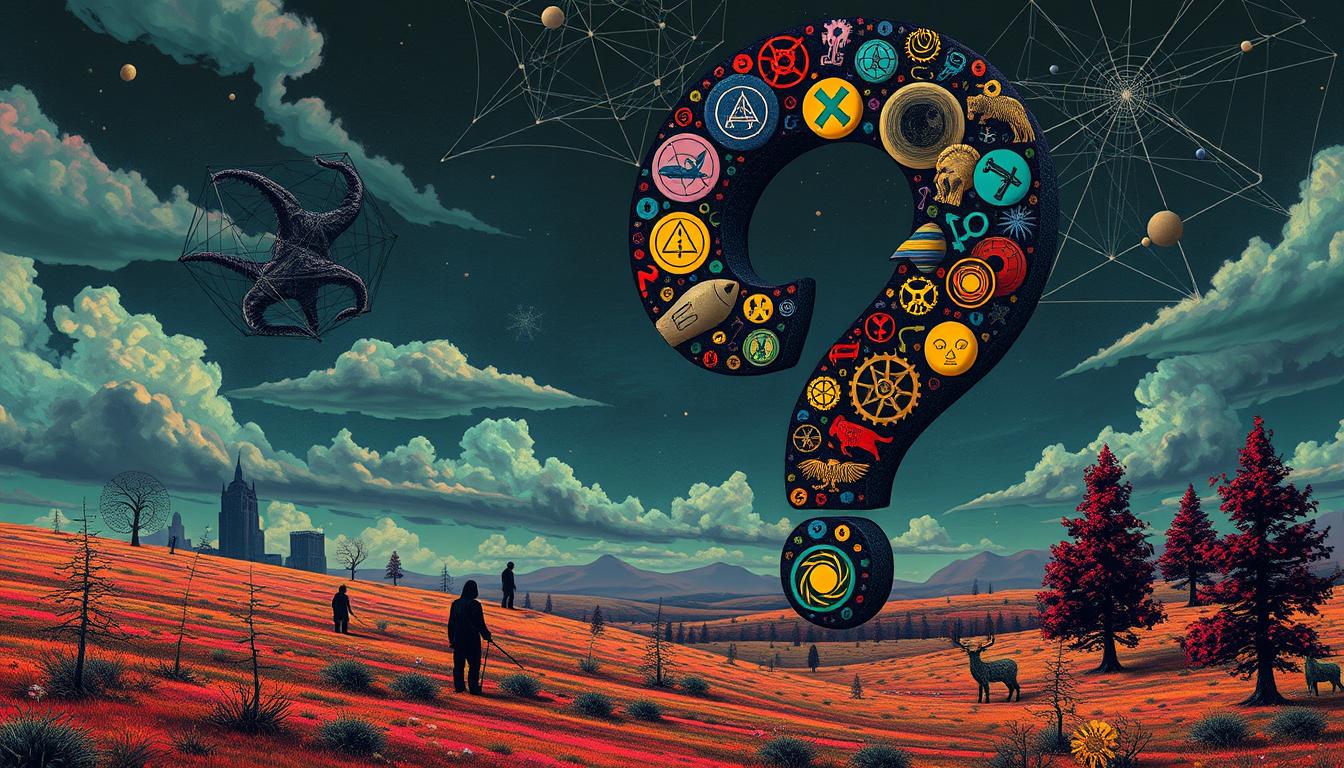In the world of online disinformation, conspiracy theories spread fast. Imagine a late-night chat where your friend shares a wild theory. It’s like something from a movie. Welcome to the decade’s conspiracy theories, where reality meets fantasy.
The digital age has changed how misinformation spreads. Now, fringe beliefs can become global trends. With bots making up nearly half of internet traffic, it’s hard to tell fact from fiction. Fake news has made conspiracy theories a common topic.
These theories cover everything from moon landing hoaxes to secret groups controlling the world. They give us simple answers to complex questions. They help us feel in control in a chaotic world.
Key Takeaways
- Conspiracy theories thrive in the digital ecosystem of online disinformation
- Nearly half of internet traffic comes from bots, amplifying misinformation
- Theories often emerge from psychological needs for understanding and control
- Social media algorithms significantly contribute to spreading conspiracy narratives
- 40% of Americans have endorsed at least one conspiracy theory
The Flat Earth Theory

The Flat Earth theory is a key example of how conspiracy theories spread online. Despite clear scientific proof, many believe our planet is flat. They argue against decades of research and space exploration.
This idea started in the 19th century with Samuel Rowbotham. It grew thanks to the internet. A YouGov survey found that one in six Americans doubt the Earth is round, showing the web’s influence.
Understanding why people believe in the Flat Earth is important. They often deny photos from space, saying NASA is lying. But, the DSCOVR satellite has taken many pictures proving Earth is round, and they don’t believe it.
The Flat Earth Society has over 200,000 Facebook followers. This shows how social media can make strange ideas seem normal. It’s hard to fight false information online.
Even though science proves Earth is round, some people keep looking for other answers. This shows how strong the desire for different views can be.
The Reptilian Elite Hypothesis
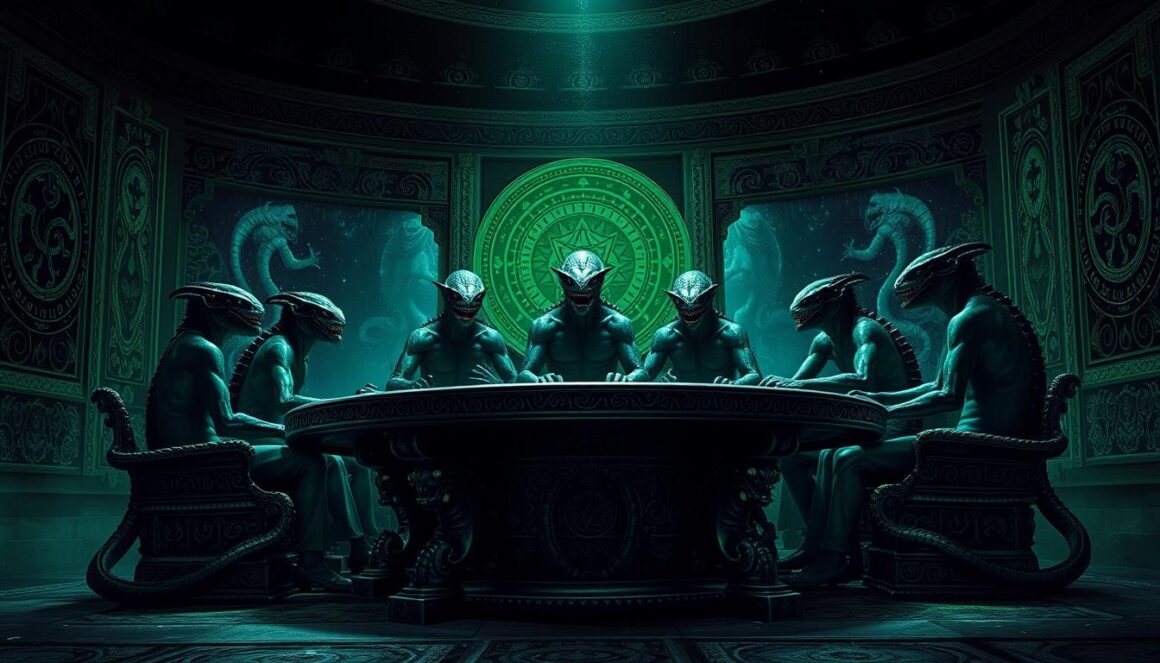
Explore one of the decade’s most unusual conspiracy theories: the Reptilian Elite Hypothesis. It claims that shape-shifting reptilian aliens secretly run our world. They do this by disguising themselves as leaders, celebrities, and influential people.
British conspiracy theorist David Icke made this idea famous worldwide. He said these reptilian beings can change their looks to fit in with humans. They control politics and money from the shadows.
A 2013 survey showed 4% of Americans believed in “lizard people” ruling us. This shows how false information can become part of our thinking. It turns wild ideas into believable stories.
Those who believe in reptilian aliens often talk about strange eye changes or quick glimpses of scales. But these are just misseen signs and biases, not real proof.
Experts think believing in these theories might help people feel less powerless. When we feel out of control, we might look for big reasons for things. This makes the idea of a secret ruler seem comforting.
Science groups always say these claims are not true. They point out there’s no real evidence for reptilian elites. Fact-checkers say these stories are false. They remind us to think critically in a world full of lies.
The Phantom Time Hypothesis
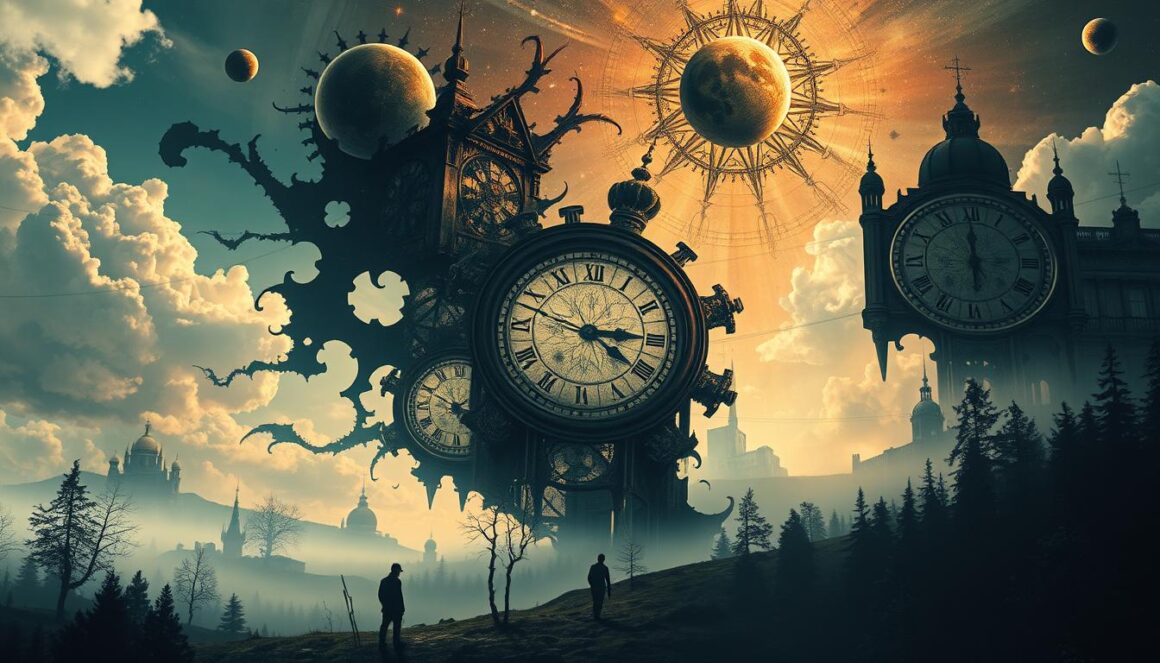
The Phantom Time Hypothesis is a bold claim in conspiracy theory psychology. It was proposed by German historian Heribert Illig. He suggests that 297 years of history between AD 614-911 never happened. This idea challenges our view of history and draws in those interested in misinformation.
Illig believed that Otto III, Pope Sylvester II, and Constantine VII created this fake history. He thought we are actually in the year 1724 AD, not 2023. He based this on what he saw as oddities in early medieval history and architecture.
But, the Phantom Time Hypothesis doesn’t hold up to science. Archaeology, astronomy, and global records all disagree with Illig. Solar eclipses, carbon dating, and tree rings all support the real timeline, debunking the theory.
Experts say this theory tells us more about human psychology than history. It shows how distrust in history and a love for mystery can lead to conspiracy theories.
Though the Phantom Time Hypothesis is intriguing, it’s a lesson in how theories fail under close scrutiny. It shows how imagination can be sparked, but facts always win out.
Chemtrails and Weather Control

The chemtrails conspiracy theory has become a big deal online. People think that airplane trails are not just water vapor but chemicals sprayed on purpose. They believe it’s for controlling the population or changing the weather.
But, science says there’s no truth to this. Scientists say that airplane trails are just water vapor in cold air. They last a long time only when the air is just right.
Even though scientists have proven it wrong, the idea keeps going online. Right-wing podcasts and social media make it worse. Even places like Harvard get emails from people who believe in these theories.
But, experts keep saying it’s not true. Cloud seeding is the closest thing to weather control, and it’s open to everyone. Plans for it are even online, showing there’s no secret government program.
This shows how easy it is for false ideas to spread online. It’s a reminder of the dangers of unchecked misinformation in our digital world.
The Mandela Effect Mystery
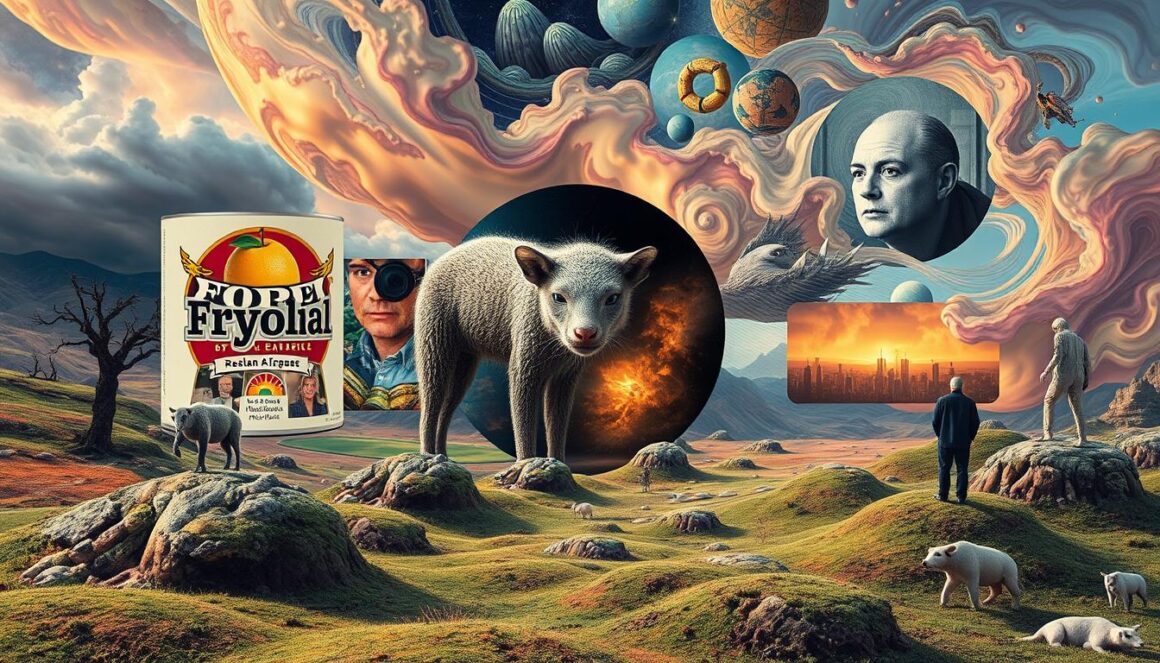
The Mandela Effect is a blend of conspiracy theory and how our memories can change. It’s when many people remember things that didn’t happen the same way. This is named after Nelson Mandela, who many thought died in prison in the 1980s, but he actually passed away in 2013.
Online misinformation helps spread these false memories. For example, many remember the Berenstain Bears being called “Berenstein Bears.” Others recall the Monopoly man wearing a monocle. A surprising 59% of people have these incorrect memories, showing how tricky our brains can be.
Scientists have looked into why this happens. Neuroscientists like Wilma Bainbridge found that people can be sure of false memories of famous figures. The spread of fake news online might make these false memories even more common, creating a cycle of misinformation.
Psychologists say these false memories come from how our brains work and how we influence each other. But some believe in more out-of-this-world reasons. They think the Mandela Effect could be proof of parallel universes or even reality changes, turning a simple memory glitch into a mind-bending theory.
The Hollow Moon Theory
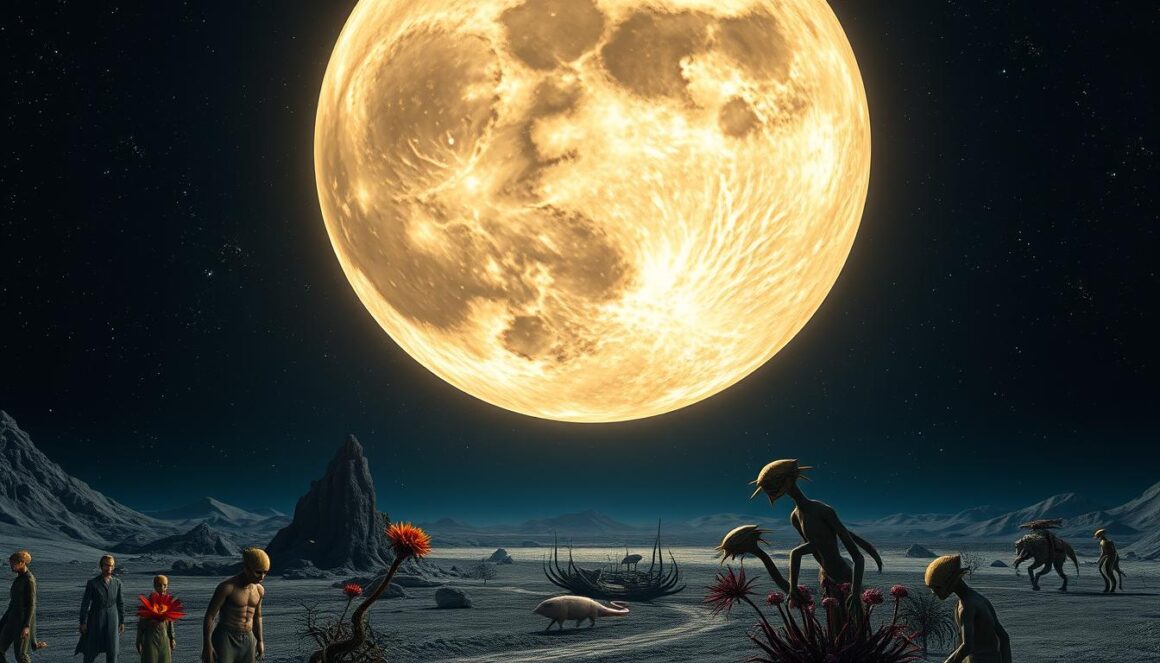
The Hollow Moon Theory is a fascinating conspiracy idea from the decade. It questions what the moon is really made of. Some believe the moon might be hollow or even man-made.
But, science says it’s not true. The moon’s density is different from Earth’s, but it’s not hollow. NASA’s Lunar Prospector mission in 1998 showed the moon’s gravity field. This proved the moon is not hollow.
Experts have found solid evidence against the Hollow Moon Theory. The moon’s structure and core size show it’s solid. This means the moon is not hollow.
Some think the moon sounds like a bell when hit by meteorites. They see this as proof of hollow spaces. But scientists say the moon’s dry and stiff nature makes it sound different from Earth.
Even though movies like Moonfall imagine the moon in exciting ways, science always wins. It shows the moon is not as mysterious as some think.
The Paul McCartney Death Claim
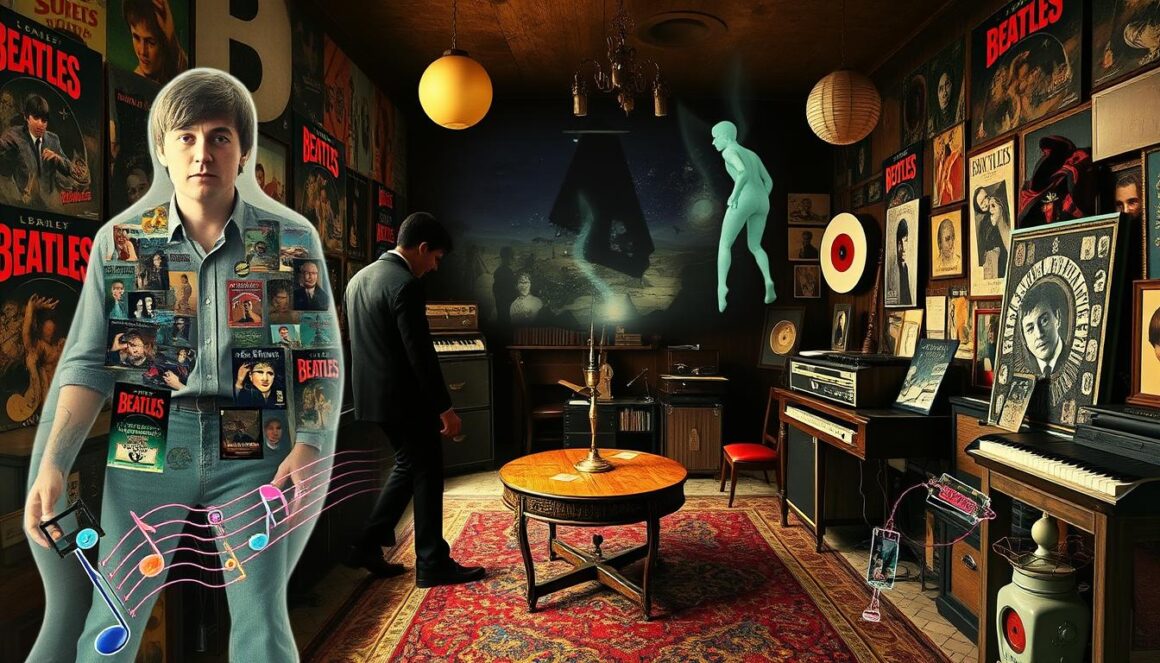
The “Paul is Dead” conspiracy theory swept the globe in 1969. It claimed Paul McCartney died in a car crash in 1966. Fans believed he was replaced by a look-alike.
People looked closely at Beatles album covers and song lyrics for hidden messages. They thought album covers and recordings had secret messages about McCartney’s death. The first article about this appeared in September 1969 in The Drake Times-Delphic.
College campuses were where this story spread fast. Radio stations like WKBW in Buffalo even talked about it on air. Fans came up with detailed theories, seeing clues in album designs and song lyrics.
McCartney himself said the rumors were false. A Life magazine interview in November 1969 helped clear things up. But the rumor’s impact was big, showing how strong fan theories can be.
This rumor showed how our imagination can make us believe in things. Even today, it fascinates music fans and conspiracy theorists.
The 7 Most Bizarre Conspiracy Theories of the Decade – conclusion
The digital age has made conspiracy theories more complex. Online disinformation has become a big challenge to truth. The Flat Earth theory and claims about reptilian elites show how fast misinformation spreads.
Psychological studies say conspiracy theories meet deep human needs. People seek answers when they feel left out. Sites like Infowars make money from these claims, showing the financial side of spreading them.
It’s important to debunk these myths in many ways. We need critical thinking and media literacy. The Pizzagate case shows the dangers of believing false information.
To fight misinformation, we must be skeptical and fact-check. Education and critical thinking are key. They help us fight against unfounded conspiracy theories.
FAQ
What makes conspiracy theories so compelling to people?
Conspiracy theories tap into people’s need for certainty and control. They offer simple answers to complex issues. This makes believers feel special and more informed than others.
How do conspiracy theories spread so quickly in the digital age?
Social media plays a big role in spreading conspiracy theories. It favors content that gets a lot of engagement. Online forums and platforms also help spread unverified claims fast.
Are all conspiracy theories completely false?
No, not all are false. Some, like the Watergate scandal, are true. But most rely on speculation and misinterpretation of facts.
Why do people continue to believe in conspiracy theories despite contradictory evidence?
It’s called confirmation bias. Believers ignore facts that go against their views. They see any challenge as part of the conspiracy. This makes it hard to change their minds.
How can we combat the spread of misinformation and conspiracy theories?
We can teach critical thinking and media literacy. We should also provide clear, non-confrontational facts. Approaching believers with empathy is key.
What are some common characteristics of successful conspiracy theories?
Good conspiracy theories offer exciting explanations for big events. They involve secret actions by powerful groups. They also confirm existing beliefs and give a sense of control.
Can conspiracy theories be dangerous?
Yes, they can be. They can damage trust in science and institutions. They can also lead to harmful actions based on false beliefs.
How do psychological factors contribute to belief in conspiracy theories?
Psychological needs like uniqueness and control play a role. People seek explanations for uncertain situations. This makes complex conspiracy stories appealing.
Are certain demographics more susceptible to conspiracy theories?
Not really. But, lower education and feelings of powerlessness can make people more open. Political extremism and limited critical thinking also play a part.
How has technology impacted the spread of conspiracy theories?
Technology has made it easier for conspiracy theories to spread. Social media and online forums help theories go viral. They create echo chambers that reinforce beliefs.

